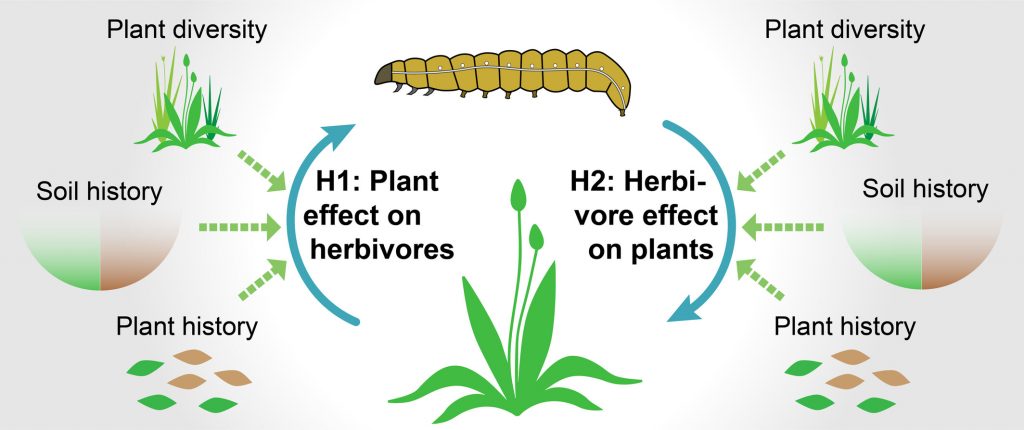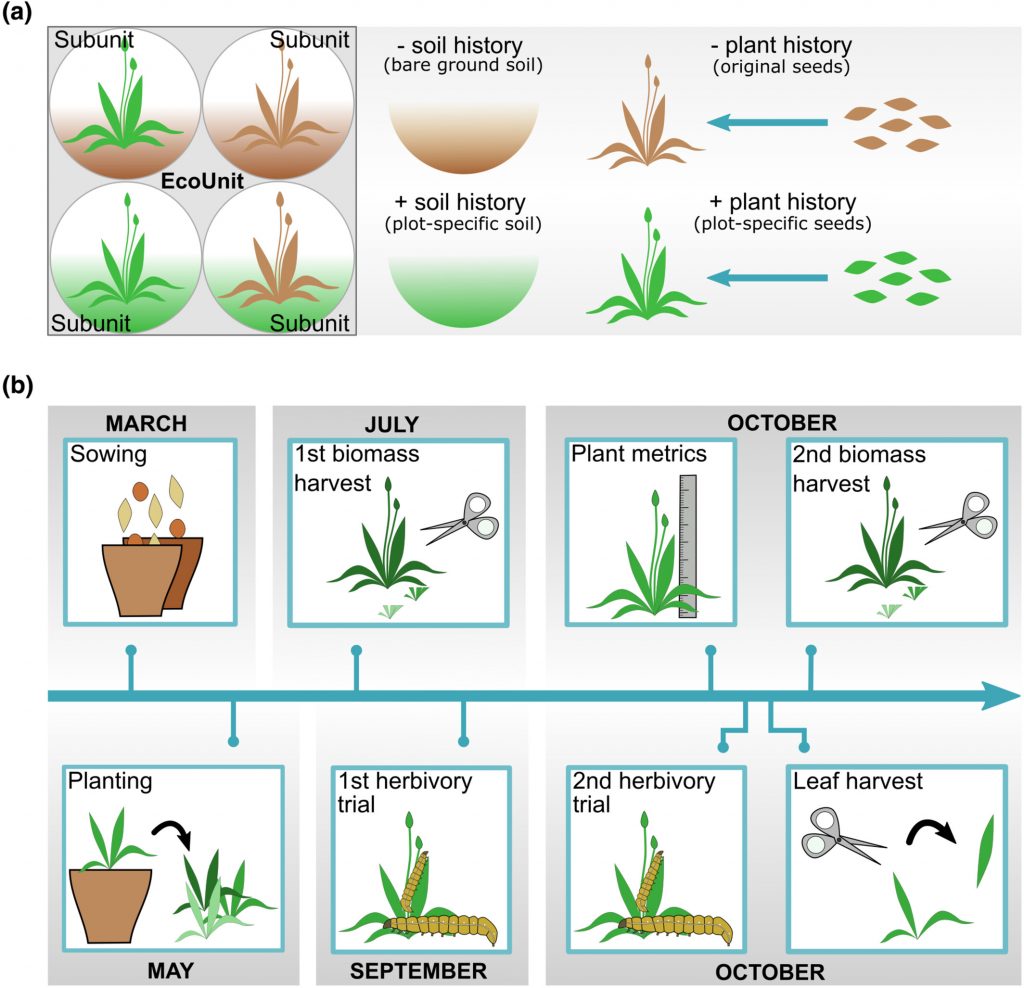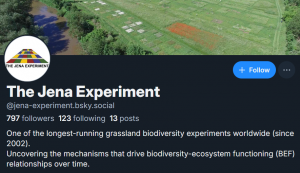New publication from Bröcher in Functional Ecology: Plant–herbivore interactions depend on plant richness, plant and soil history
Insect herbivores play a central role in grassland ecosystems. They depend on plants for their nutrition and exert feedback effects on plant communities. Although such reciprocal relationships are well recognized, how they are shaped by plant community diversity and history remains largely unexplored.
In a full-factorial mesocosm experiment in which plant species richness (1, 2, 3 and 6 species mixtures), soil and plant history conditions were manipulated, we used Spodoptera exigua (Hübner, 1808) caterpillars to inflict damage on Plantago lanceolata L. plants. We used herbivore performance, plant performance and various plant traits to investigate two main questions: (I) the interactive effects of plant traits, plant diversity and plant and soil history on herbivore performance, and (II) the impact of herbivory on plant traits and performance, considering varying plant diversity and plant and soil history.
Here, we found reciprocal effects between plants and herbivores that varied with plant species richness, plant history and soil history. Specifically, herbivores performed better on more nutritious plants, with the strength of this effect depending on both plant and soil history, while they performed worse with increasing plant species richness. However, the latter effect was not observed in a subsequent trial conducted a few weeks later. Additionally, herbivory reduced plant height in monocultures, altered nutritional quality and physical defences compared to undamaged controls depending on plant history, and increased chemical defence compounds.
Our study demonstrates that bidirectional interactions between plants and arthropods are key to understanding community-level responses, as the strength and direction of these reciprocal effects depend on plant and soil history as well as plant richness. This context dependence drives community dynamics and has important implications for ecosystem functioning, species coexistence and coevolutionary processes.


Reference:
Bröcher, M., A. Ebeling, L. Bassi, P. Medina-van Berkum, N. M. van Dam, et al. (2025). Plant–herbivore interactions depend on plant richness, plant and soil history. Functional Ecology n/a. https://doi.org/10.1111/1365-2435.70191



